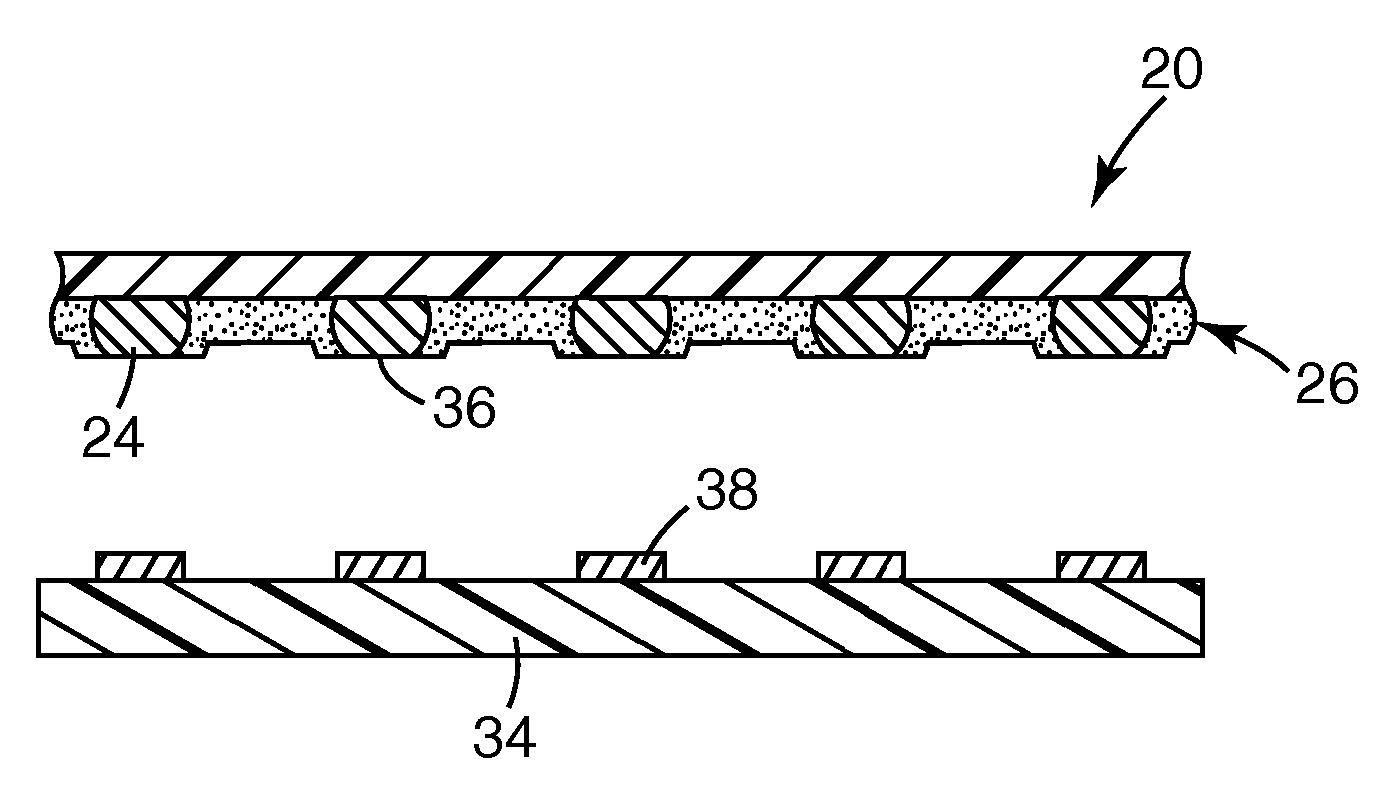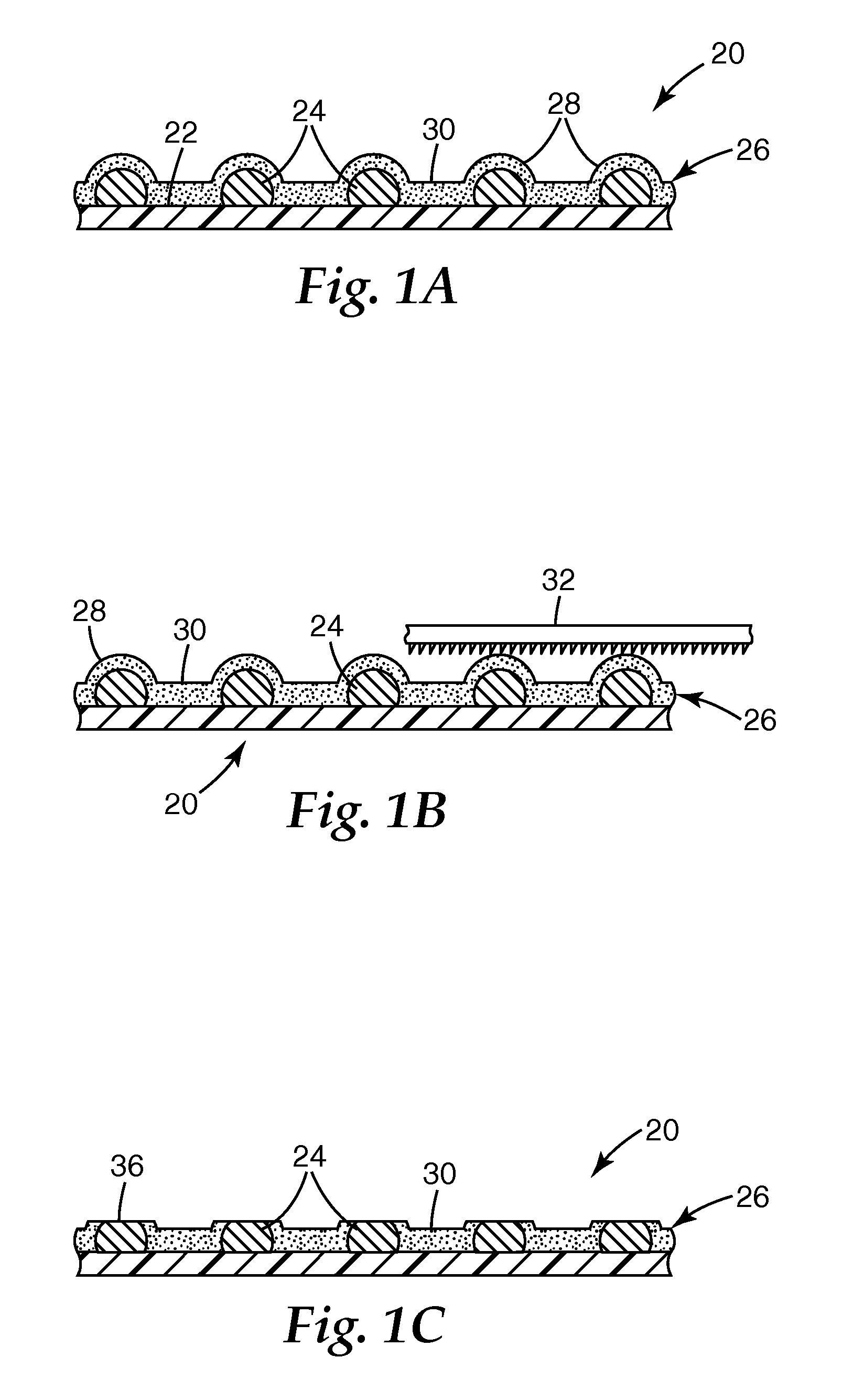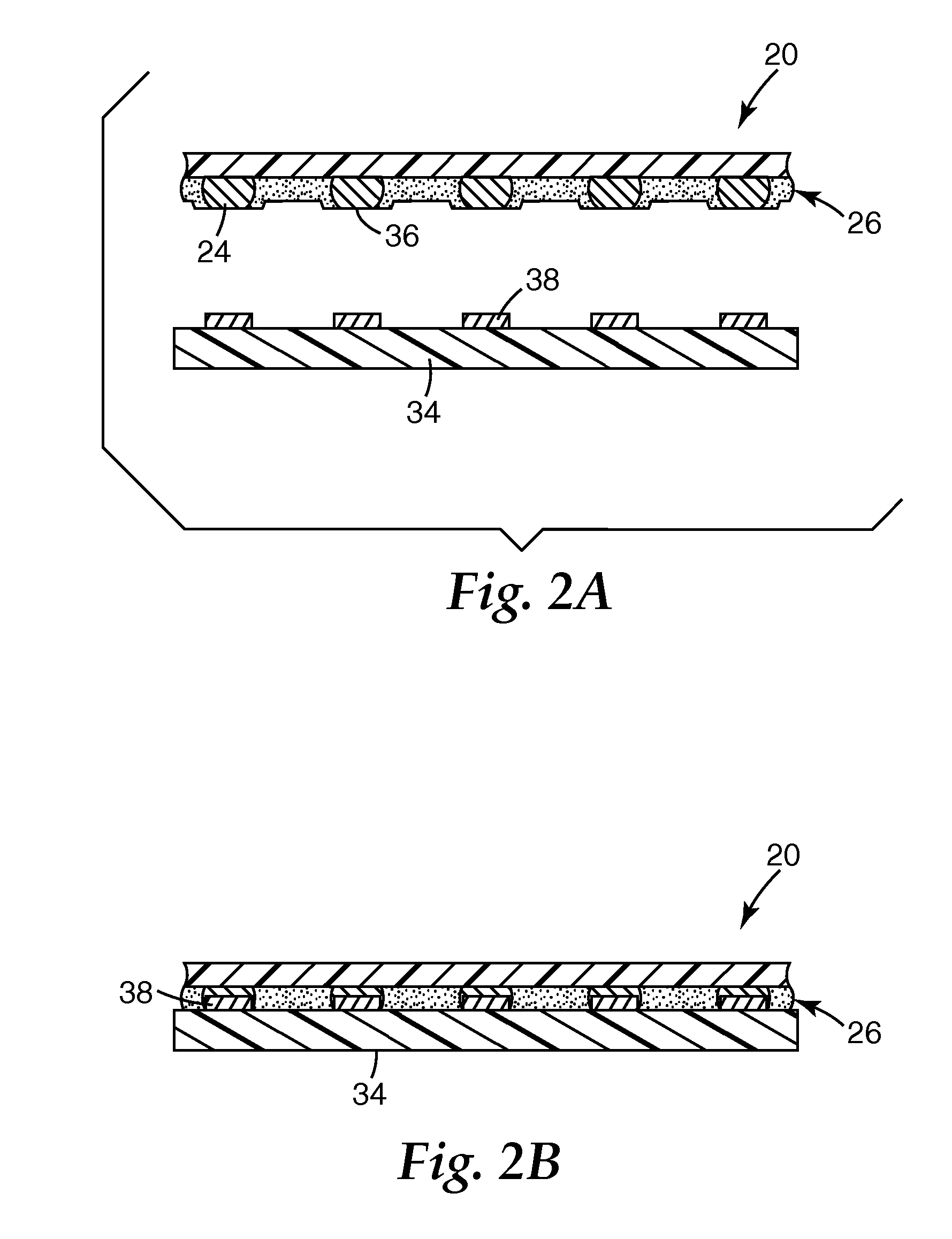Solvent Assisted Burnishing of Pre-Underfilled Solder-Bumped Wafers for Flipchip Bonding
a technology of underfilled solder-bumped wafers and flip-chip bonding, which is applied in the direction of electrical equipment, semiconductor devices, semiconductor/solid-state device details, etc., can solve the problems of fluxless attach potential, achieve the effect of reducing assembly costs, improving interconnect reliability, and simplifying the flip-chip assembly process
- Summary
- Abstract
- Description
- Claims
- Application Information
AI Technical Summary
Benefits of technology
Problems solved by technology
Method used
Image
Examples
example one
Comparative, Dry Abrading
[0072] A piece of silicon measuring approximately 2×2 inches and comprising an array of 9×9 bumped chips was used. The solder bumps were approximately 100 microns in diameter and were of a eutectic 63-37 Sn—Pb alloy. Each chip contained 68 bumps in a peripheral array. The chips were pre-encapsulated, using a heat-lamination process, with an uncured one-part epoxy based adhesive film having an initial thickness slightly greater than 100 microns.
[0073] The pre-encapsulated wafer-section was attached bumped side-up to an aluminum puck which was then placed face down into a Struers Metallurgical polishing machine, available from Struers, Inc. of Westlake, Ohio. The 8 in. diameter turntable was provided with a single piece of 1200 grit Emory paper. The wafer-section was placed in contact with the Emory paper with a total force of 5N. The turntable and the wafer section were spun independently at 150 rpm for a period of 35 s with no applied lubricant.
[0074] Aft...
example 2
[0075] A single chip was laminated with an uncured one-part epoxy based adhesive film. The chip contained solder bumps of roughly 100 micron diameter. The adhesive was laminated by pressing by hand at a temperature of 60° C. Bump locations were visible but bumps were not exposed. Plasma etching was attempted with a Model PS0524 unit from Plasma Science, an RF type system operating at 13.5 MHz and delivering a maximum power of 500 W with matching network capability. An oxygen plasma was used. The chip was placed in the middle of the plasma field, which was of a sky blue color. A maximum power in the range of 60% of full power was used, and the chip was exposed for a period of about 15 minutes. Afterwards the adhesive surface was examined with SEM. The surface appearance suggested only a small degree of etching of the adhesive matrix but minimal to no etching of the silica filler particles themselves. The bumps, which were closely examined, remained largely...
example 3
Present Invention, Effect of Wiping Material
[0076] Pieces of silicon measuring approximately 0.8×0.8 inches, each comprising an array of 4×4 chips, were used. Each chip contained 88 eutectic SnPb bumps of approximately 100 micron diameter. The chip arrays were not pre-diced. Each chip array was pre-encapsulated using a heat-lamination process with an uncured one-part epoxy based adhesive film having a thickness of approximately 100 microns.
[0077] For each chip array, the clearing of encapsulant from the bump tips was attempted with one from the series of polishing pad materials listed below in Table 1. The polishing pad materials are available from Struers, Inc. of Westlake, Ohio, Allied High Tech Products, Inc. of Rancho Domingo, Calif., and The Texwipe Company LLC of Upper Saddle River, N.J.
[0078] For each experiment, the polishing pad was slightly dampened with a small amount of acetone immediately prior to use. Care was taken to avoid having any standing liquid on top of the ...
PUM
 Login to View More
Login to View More Abstract
Description
Claims
Application Information
 Login to View More
Login to View More - R&D
- Intellectual Property
- Life Sciences
- Materials
- Tech Scout
- Unparalleled Data Quality
- Higher Quality Content
- 60% Fewer Hallucinations
Browse by: Latest US Patents, China's latest patents, Technical Efficacy Thesaurus, Application Domain, Technology Topic, Popular Technical Reports.
© 2025 PatSnap. All rights reserved.Legal|Privacy policy|Modern Slavery Act Transparency Statement|Sitemap|About US| Contact US: help@patsnap.com



